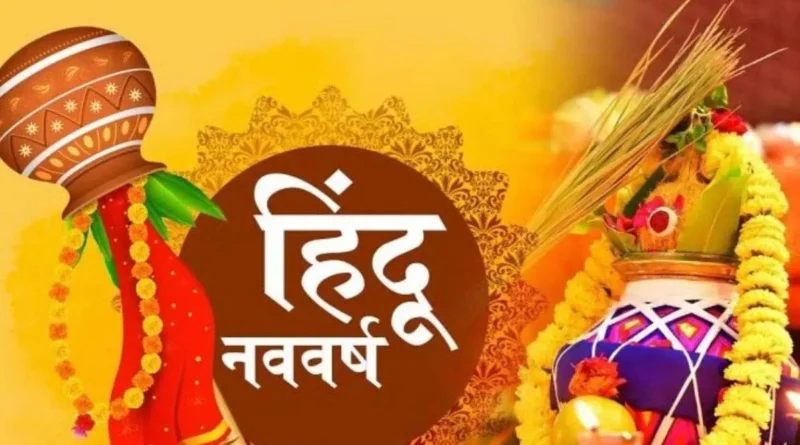Hindu Calendar!? 12 Months-Copied by everyone as it is!!
Hindu Calendar is called “Panchang”(पंचांग) in Hindi. It generally follows the lunar cycle instead of Solar Cycle like in typical “Gregorian Calendar.” Hindu Calendar is in use in India since ages immemorial. The official Calendar of India is also based on Lunar Cycle Calendar which is “Saka Samvat”. Samvat is a Hindi translation of Calendar, Indian Government also uses Gregorian Calendar along with Hindu Calendar.
This Calendar is used by the native faiths of India like Buddhists, Jains, Sikhs, etc. All these faiths follow Hindu Panchang for their day to day business.

Composition of Hindu Calendar
Hindu Calendar or Samvat or Panchang all are same, consists of 12 Months. It is very strange and fascinating thing that Hindu Calendar is the one which has been followed by every other Calendar in the world exists today, the only difference is that the names are changed but the basic structure is still exactly similar to the Hindu Calendar.

1. A month includes
a. Paksha (cycle of moon)
(I). Krishna Paksha: It is the phase of moon cycle in which moon is under ‘waning phase’. It goes from full moon size to no moon with each day diminishing it’s luster. This phase consists of around 15 days.
(II). Shukla Paksha: It is the very next phase of moon cycle starts just after the ‘waning phase’ finishes. It is also called ‘Waxing phase’ in which moon goes from no moon to full moon. This phase is also consists of around 15 days similar to the Krishna Paksha.
b. Tithi (the dates)
Tithi is the term that is used in Hindu Calendar referred to as dates in Gregorian Calendar. The Catch here is that date starts from 1 and goes up until 15. But again after 15 the date would start from 1 even if it is the same month.
It goes along with each Paksha (cycle of moon). When Krishna Paksha starts, the dates start from 1 and goes up until 15. Again when Shukla Paksha starts, the date becomes 1 and goes up to 15.

Pronunciation of Dates or Tithis in Hindu Calendar.
1. Padva (1st) 8. Ashtami (8th)
2. Dwitiya or Dauj or Dooj (2nd) 9. Navmi (9th)
3. Tritiya or Teej (3rd) 10. Dashami (10th)
4. Chaturth or Chauth (4th) 11. Ekadashi (11th)
5. Pancham or Panchami (5th) 12. Dvadashi (12th)
6. Shashthi (6th) 13. Trayodashi or Tyoras (13th)
7. Saptami (7th) 14. Chaudash (14th)
15. Amavas (when it is no moon or last day of Krishna Paksha) 15th
16. Poornima (when it is full moon or last day of Shukla Paksha) 15th
Circulation of Hindu Calendar
In Hindu Calendar there is no concept of adjusting the due dates of the year into the month of February after every 4 years or so. In Hindu Calendar each moth according to the cycle of the moon adjust dates each month. That’s why it is very common in Hindu Calendar that sometimes we miss tithis or skip them. And sometimes two days consists of same Tithi.
For example if today is Dauj (2nd) it might happen that tomorrow would also be Dauj or tomorrow would be Chauth or Chaturth (4th). It all depends on moon cycle, the most fascinating thing about Hindu Calendar is that it has been calculated for thousands of years in future as to at which date which moon phase would be there and Tithis are assigned already, some few thousands of years back by Hindu Mathematicians and Astrologers. Even today same calculated Calendar is being followed and there is not even a zilch of mistake in that calculation.
Hindu Festivals and Hindu Calendar
Hindus all over the world follows this Calendar and all their festivals are in sync with it. Irrespective of the last year celebration day of Diwali, it is not sure that next year would also be the same Gregorian date. It would differ, but Tithi would remain same for the next year as it was last year for any Hindu festival.
1. Ram Navmi (Birth of Bhagwan Ram) – It is celebrated on the Navmi (9th) of Shukla Paksha in the Month of Chaitra (The very first month of Hindu Calendar)
2. Hanuman Jayanti (Birth of Hanuman, the servant of Bhagwan Ram) – It is celebrated on the Poornima (15th) of Shukla Paksha in the Month of Chaitra.
3. Diwali – It is celebrated on the Amavas (15th) day of Krishna Paksha in the Month of Kartika or the 8th Month of Hindu Calendar.
Hindus are the Oldest and the Only living civilization in this entire world. They are the most ancient by their culture, no one is older than them. Their heritage and their knowledge is very rooted inside the science and logic. But because of the long centuries of subjugation by Muslim and British Invaders, their development was hampered. Now they are rising again and doing the same good things that they have been doing since ages along with following their roots and culture.


Pingback: Mahashivratri 2023 | Significance-Scientific Reason- Celebration Methodology - Yuva Aware